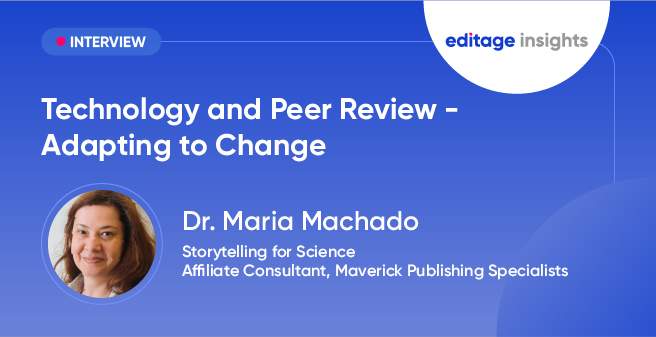Digital accessibility: What it means and why it is important in scholarly publishing

Technology has raised everybody’s living standards and capabilities, but for some it has made particularly dramatic differences. People living with disabilities and chronic illnesses now enjoy greater mobility, communication, and inclusion in society than at any time until now, thanks to adaptive technologies that help them in situations that would otherwise pose great challenges. Motorized wheelchairs, hearing aids, and adapted controls for motor vehicles are all visible examples of technology facilitating the inclusion of people with disabilities. While digital accessibility tools are less conspicuous, they are nonetheless necessary to enable people with disabilities to enjoy full access to digital material. In this article, I would like to explore the concept of digital accessibility, discuss why it is important in scholarly publishing, and look at how publishers are facilitating accessibility.
Digital accessibility—A primer
Digital accessibility comprises a range of technologies that facilitate the use of digital content, such as websites, applications, documents, and multimedia by people with disabilities. In brief, digital accessibility aims to remove barriers and ensure that technologies such as computers and smartphones are inclusive and usable by everyone.
Accordingly, many commercial operating systems and browsers include built-in accessibility features, including keyboard navigation, descriptive audio, high-contrast color schemes, and even eye-tracking technology. Likewise, a lot of digital media includes alternatives to visual and auditory content, such as captions, transcripts, and audio descriptions.
In recognition of these needs, many regulatory bodies have demanded that digital accessibility be included as a reasonable accommodation, such as in the USA’s Americans with Disabilities Act. However, ensuring digital accessibility is not only a matter of compliance with legal requirements, but also a social responsibility and a business opportunity, as it can increase the reach, engagement, and satisfaction of a broader audience, including people with disabilities.
Digital accessibility standards and best practices
The World Wide Web Consortium (W3C) is the most prominent organization that develops and publishes standards for the Internet. Web Content Accessibility Guidelines (WCAG) 2, first published by the accessibility initiative of W3C in 2008 and recently amended, is the primary handbook for digital accessibility online. These guidelines have been adopted by the European Union in Directive (EU) 2016/2102 to standardize accessibility guidelines across the union, requiring members to legislate accordingly.
W3C’s Accessibility Fundamentals portal is the best overview I have encountered to understanding the rationale, issues, and implementation of accessibility guidelines. If digital accessibility is new to you, I suggest beginning with the resources listed in their FAQ section.
Mozilla, best known for its Firefox browser, offers great overviews of how to conform to web accessibility guidelines in its Mozilla Developer’s Network portal. These resources are ideal as an ongoing reference material for developers.
Smartphones and tablets are increasingly becoming one of the main ways that people interact with digital media. Accordingly, digital accessibility is also vital for mobile devices.
Finally, media should also be appropriately optimized. Briefly, here are some common media and some accommodations that should be considered.
|
Documents |
|
|
Videos |
|
|
Images |
|
|
Audio |
|
|
Interactive applications |
|
Why accessibility matters to scholarly publishers
Ensuring digital accessibility can be considered an ethical obligation, as it enables people with disabilities to fully participate in academic and scientific activities and access critical information. As mentioned previously, it can also bring several business benefits to scholarly publishers, including increased readership, engagement, and impact. By making their content accessible to people with disabilities, publishers can expand their audience and increase their reach, which can lead to more citations, downloads, and usage. Finally, demonstrating a commitment to digital accessibility can enhance the reputation and brand image of publishers and help establish them as leaders in inclusive publishing practice.
How publishers have been ensuring accessibility
Countless publishing organizations have been working hard to ensure they offer accessible digital material. Here, I discuss three examples of how accessibility policies have been executed.
In 2021, Oxford University Press (OUP) published a thought-provoking first-hand account of how they realized the value of digital accessibility upon learning of issues that students and faculty of the Open University had suffered with using some of their products due to poor compatibility with screen reading software and the lack of keyboard navigation. This not only spurred on a re-examination of the issues surrounding accessibility, but also led to OUP pursuing a more transparent policy to ensure accessibility.
Elsevier, the scholarly publishing giant, has made extensive adaptations to its websites and services to ensure accessibility and compatibility with commonly used tools such as screen readers. They have laid out their changes and commitments across concise lists in one webpage, which can work as an excellent checklist for assessing how your organization measures up.
The need for accessibility is increasingly being addressed outside of the traditional publishing paradigm. As one example, arXiv details its own efforts to improve accessibility in a dedicated page. Furthermore, they have even offered a detailed and transparent research report of how they have addressed accessibility issues and provided a road map of challenges that remain to be tackled.
Conclusion
Digital accessibility is worth pursuing due to the substantial benefits it can offer to publishers and society overall. Ensuring your digital resources are accessible can be a big undertaking; fortunately, the resources listed in this article offer fantastic guidance on how to implement digital accessibility, so I highly recommend consulting them as you create a more inclusive digital strategy—whether for the content you create, if you are a research producer, or the content you disseminate, if you are a publishing organization.




